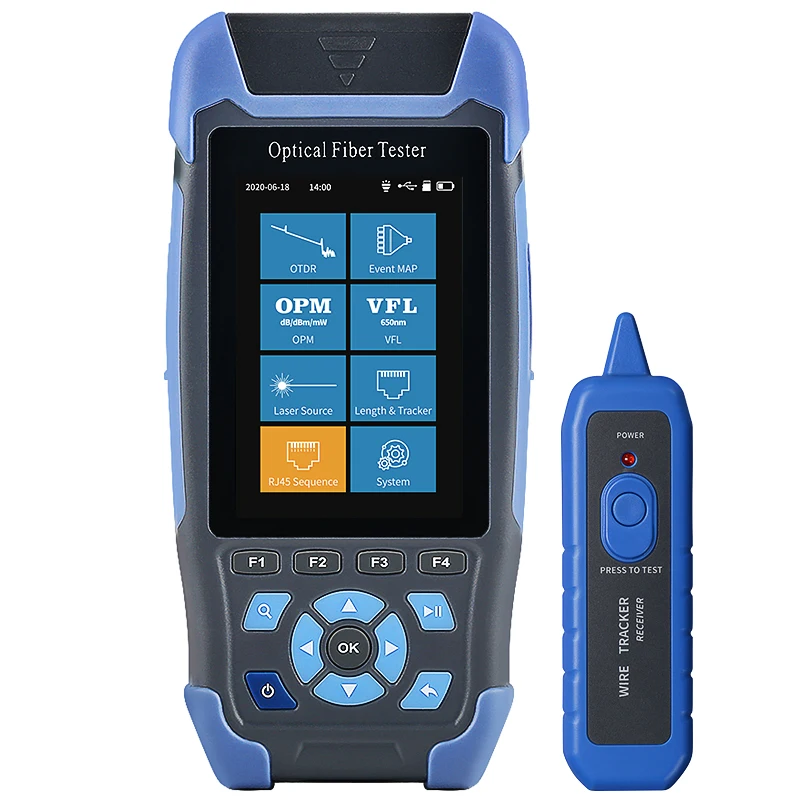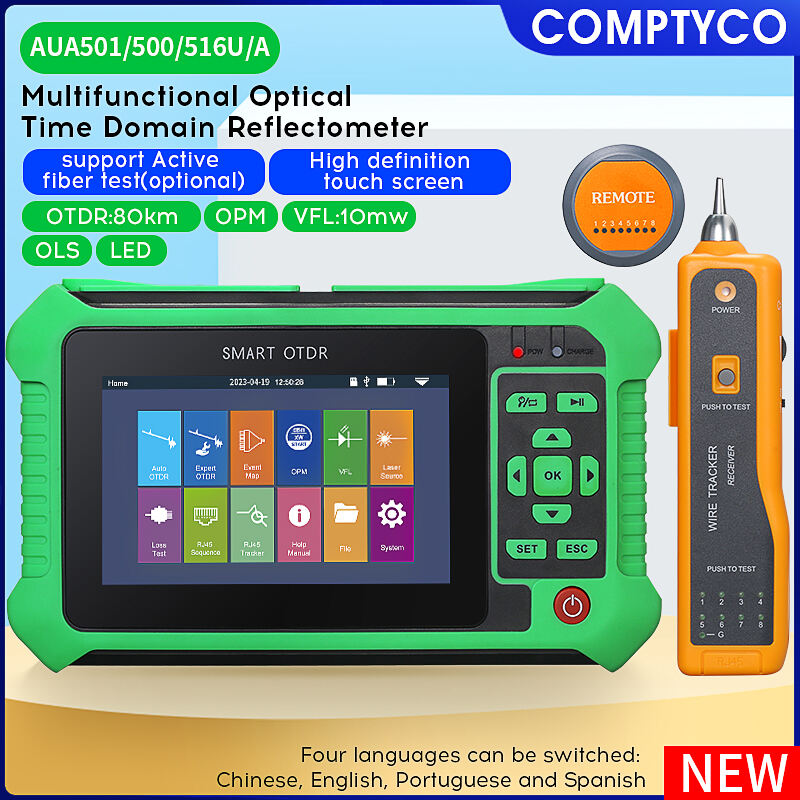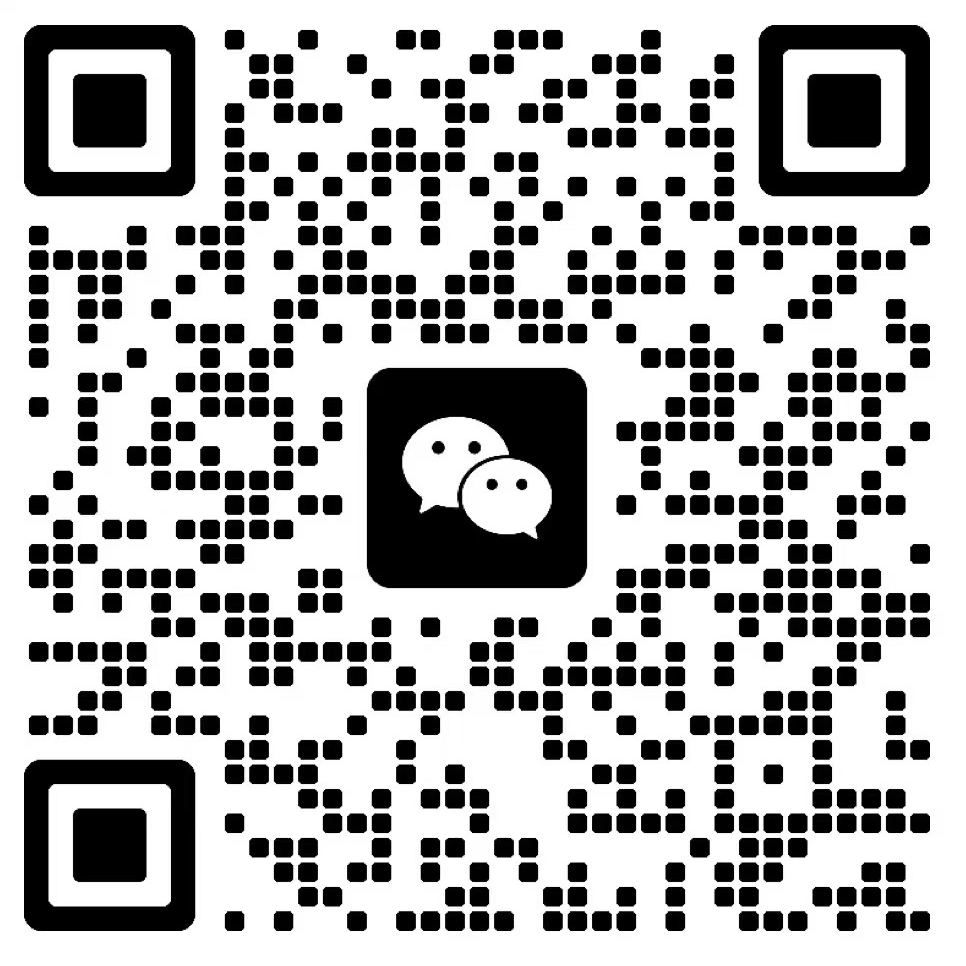The optical time domain reflectometer has revolutionized the way fiber optic networks are tested, maintained, and troubleshooted. As telecommunications infrastructure continues to expand globally, this sophisticated testing instrument has become indispensable for network engineers and technicians working with fiber optic cables. Understanding how to effectively utilize an optical time domain reflectometer is crucial for maintaining optimal network performance and quickly resolving connectivity issues.

Understanding OTDR Technology
Basic Operating Principles
The optical time domain reflectometer operates by sending short pulses of light into the fiber and analyzing the light that is reflected back. This technology enables technicians to measure fiber length, locate breaks, identify splice points, and determine overall signal loss across the fiber optic cable span. The instrument measures both the time and intensity of the returned light signals to create detailed trace readings.
Key Components
Modern optical time domain reflectometer units consist of several essential components working in harmony. The pulse generator creates the initial light signal, while the precision timing circuit measures the travel time of reflected pulses. The high-speed analog-to-digital converter processes returned signals, and sophisticated software interprets the data to generate meaningful results for the operator.
Applications and Use Cases
Network Installation Verification
During new fiber optic network installations, the optical time domain reflectometer serves as a critical quality assurance tool. Technicians use it to verify proper cable installation, confirm splice quality, and document the network's baseline performance characteristics. This initial testing provides valuable reference data for future troubleshooting efforts.
Maintenance and Monitoring
Regular network maintenance relies heavily on OTDR testing to detect gradual degradation before it impacts service. Network operators conduct periodic scans to identify developing issues such as fiber stress, environmental damage, or aging components that could lead to future failures. This proactive approach helps maintain network reliability and reduce downtime.
Advanced Testing Techniques
Bidirectional Testing
Professional technicians often employ bidirectional testing using the optical time domain reflectometer to obtain the most accurate measurements. This technique involves testing the fiber from both ends and averaging the results, which helps eliminate measurement uncertainties caused by differences in backscatter coefficients.
Multiple Wavelength Analysis
Modern optical time domain reflectometer units can test at multiple wavelengths, typically 1310nm and 1550nm. This capability allows technicians to identify wavelength-dependent issues and better characterize the fiber's performance across its operational spectrum. Different wavelengths can reveal distinct types of problems or degradation in the fiber.
Interpreting OTDR Results
Trace Analysis
Understanding OTDR trace signatures is crucial for accurate network diagnostics. The trace displays various events along the fiber path, including connectors, splices, bends, and breaks. Technicians must be skilled at interpreting these signatures to differentiate between normal network components and actual problems requiring attention.
Common Event Signatures
Different fiber events create distinctive patterns on OTDR traces. Mechanical splices appear as small peaks followed by a return to the normal backscatter level. Fiber breaks show as sudden drops in the signal level, while tight bends create gradual increases in attenuation. Recognition of these patterns enables quick problem identification.
FAQ
What is the typical range of an optical time domain reflectometer?
The measurement range varies by model but typically extends from 1km to 200km. Enterprise-grade units commonly offer ranges of 40-80km, while long-haul testing units can reach beyond 160km. The actual useful range depends on various factors including pulse width, wavelength, and fiber quality.
How often should OTDR testing be performed?
Regular OTDR testing should be conducted quarterly for critical network segments and annually for standard installations. However, immediate testing is recommended after any network modifications, environmental events, or service disruptions that could impact fiber performance.
What accuracy can be expected from OTDR measurements?
Modern optical time domain reflectometer units typically achieve distance accuracy within ±0.5 meters for event location and ±0.05 dB/km for attenuation measurements. However, these specifications assume proper setup, calibration, and operation by trained technicians.







